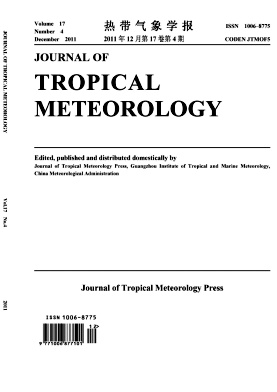|
[1]
|
ZHENG Chang-yuan. Summaries of natural disasters across the globe [J]. Dis. Reduc. China, 2000, 10(1): 14-19. |
|
[2]
|
FAN Ning-jun. Natural Disasters in China and Their Mitigation Measures [M]. Heilongjiang: Education Press of Heilongjiang, 1998. |
|
[3]
|
SHI Ya-feng. The possible tendencies of natural disasters under the impacts of global warming in China [J]. J. Nat. Dis., 1996, 5(2): 102-117. |
|
[4]
|
MA Zhu-guo, FU Cong-bin. Trend of surface humid index in the arid area of northern China [J]. Acta Meteor. Sinica, 2001, 59(6): 738-746. |
|
[5]
|
CHEN Jia-qi, SHI Neng. The preliminary study on possible scenarios of flood and drought in China in the case of global warming [J]. Sci. Geograph. Sinica, 1995, 15(3): 201-207. |
|
[6]
|
MA Zhu-guo, REN Xiao-bo. Drying trend over China from 1951 to 2006 [J]. Adv. Climate Change Res., 2007, 3(4): 195-201. |
|
[7]
|
LU Jing-hua, LI Guo-ping, XUE Sheng. Climate characteristics about heavy drought and flood in upper, middle and lower reaches of Yangtze River and Yellow River valley in flood season [J]. J. Trop. Meteor., 2002, 18(4): 262-268. |
|
[8]
|
ZHU Xiao-hua, CAI Yun-long, WANG Jian. On fractal characters of drought and flood of China [J]. Adv. Earth Sci., 2003, 18(4): 509-514. |
|
[9]
|
DENG Zheng-yong, ZHANG Qiang, YIN Xian-zhi, et al. Response of drought damage to arid climate change [J]. J. Glaciol. Geocryol., 2007, 29(2): 114-118. |
|
[10]
|
MA Zhu-guo, FU Zong-bin. Basic facts of aridification in northern China from 1951 to 2004 [J]. Chin. Sci. Bull., 2006, 51(20): 2429-2439. |
|
[11]
|
HUANG Rong-hui, CAI Rong-shuo, CHEN Ji-long. Inter-decadal variations of drought and flooding disasters in China and their association with the East Asian climate system [J]. Chin. J. Atmos. Sci., 2006, 30(5): 730-743. |
|
[12]
|
LI Ke-rang, YIN Si-ming, SHA Wan-ying. Characters of time-space of recent drought in China [J]. Geograph. Res., 1996, 15(3): 6-15. |
|
[13]
|
MA Zhu-guo, FU Zong-bin. Facts about global aridification in the second half of the 20th centuary and their links with large-scale background [J]. Sci. China (Ser. D: Earth Sci.), 2007, 37(2): 222-233. |
|
[14]
|
PAN Yao-zhong, GONG Dao-yi, WANG Ping. A research on temporal-spatial characteristics of drought in China during 1949-1990 [J]. J. Beijing Normal Univ. (Nat. Sci.), 1996, 32(1): 138-142. |
|
[15]
|
Research team on Disasters of National Economic Trades, State Planning Committee, Ministry of Science and Technology. Disasters, Society, Disaster Mitigation and Development [M]. Beijing: China Meteorological Press, 2000. |
|
[16]
|
ZENG Qing-hua, ZHU Yan-de. Encyclopedia on Meteorological Disasters in China: Hunan [M]. Beijing: China Meteorological Press, 2006. |
|
[17]
|
ZUO Li-fang, QIU Cai-xing. The characteristics of drought and influence on economy in Hunan [J]. Econ. Geography, 2000, 20(2): 36-39. |
|
[18]
|
LI Jing-bao, ZHENG Yun-you, GAO Chang-hai, et al. A discussion on geographical regularity of flood and drought in Hunan Province [J]. J. Nat. Disas., 2000, 9(4): 115-120. |
|
[19]
|
YUAN Hua-bin, LI Jing-bao. Features of Agriculture disaster of droughty & deluge resourcenization in Hunan province [J]. Yunnan Geograph. Environ. Res., 2006, 18(5): 14-18. |
|
[20]
|
REN Zhi-hua, LI Ming-qin, ZHANG Wei-min. Conversion coefficient of small evaporation pan into E-601B pan in China [J]. J. Appl. Meteor. Sci., 2002, 13(4): 508-512. |
|
[21]
|
WEI Fei-ying. Comtemporary Techniques on Statistic Diagnoses and Prediction of Climate [M]. Beijing: China Meteorological Press, 1999. |
|
[22]
|
LIN Zhen-shan. On the Theories and Models of Phase Space for Long-term Forecasting [M]. Beijing: China Meteorological Press, 1993. |
|
[23]
|
LIN Zhen-shan. On the Diagnostic Techniques of Wavelet Climatologies [M]. Beijing: China Meteorological Press, 1999. |
|
[24]
|
TORRENCE C, COMPO G P. A Practical Guide to Wavelet Analysis [J]. Bull. Amer. Meteor. Soc., 1998, 79(1): 61-78. |
|
[25]
|
XU Zhen-shuang. Discussions on the effect of Hunan topography on precipitation [J]. Water Conserv. Hydrol. Power, 1990, (2): 37-42. |
|
[26]
|
LIU Hui-yu, LIN Zhen-shan, ZHANG Ming-yang. Space-time characteristics of precipitation anomaly during the raining season in Hunan [J]. J. Trop. Meteor., 2004, 20(4): 409-418. |
|
[27]
|
ZHANG Jian-ming, LI Zu-xian, ZHANG Xin-ping. Precipitation Change in Hunan Province [J]. Adv. Climate Change Res., 2008, 4(2):101-105. |
|
[28]
|
ZHANG Jian-ming, LI Zu-xian, ZHANG Xin-ping, et al. Climatological features of annual precipitation in Hunan province during 46a [J]. J. Trop. Meteor., 2008, 24(5): 512-518. |
|
[29]
|
JIA Jian-yin, SUN Zhao-bo, LIU Xiang-wen, et al. Evolution of summer precipitation quasi-biennial oscillation in eastern China [J]. Chin. J. Atmos. Sci., 2009, 33(2): 397-407. |
|
[30]
|
DUAN Chang-chun, SUN Ji-hua. Relationship between abnormal solar activities and precipitation and temperature in China [J]. Meteor. Sci. Technol., 2006, 34(4): 381-386. |

















 粤公网安备 4401069904700002号
粤公网安备 4401069904700002号
 DownLoad:
DownLoad: